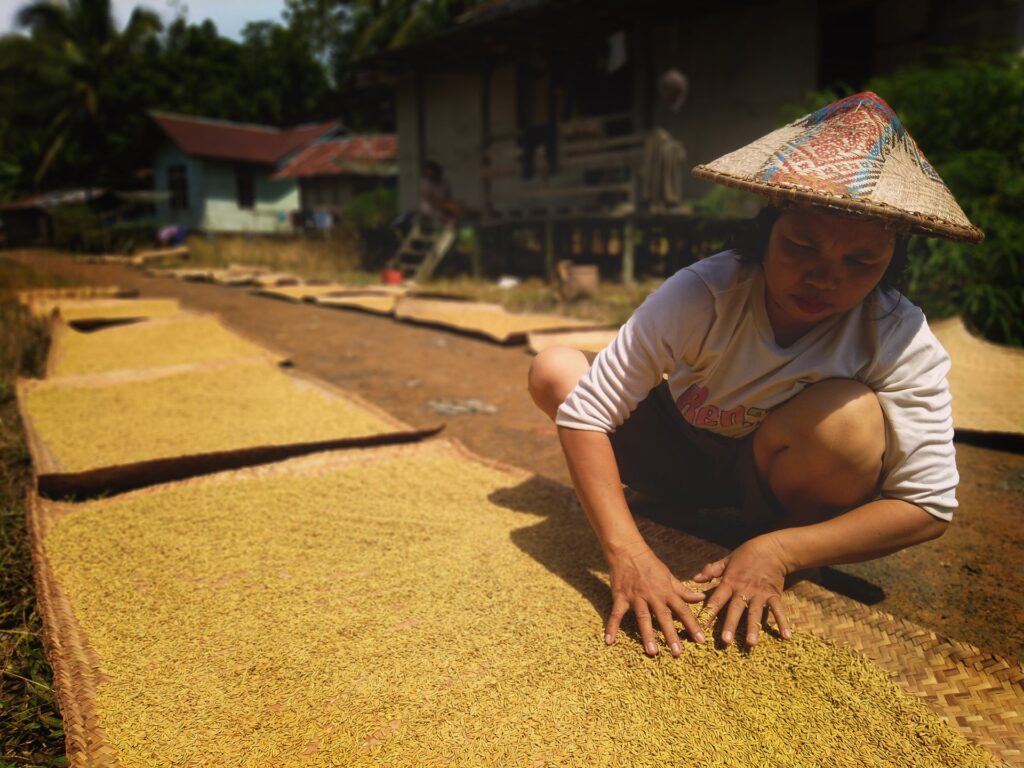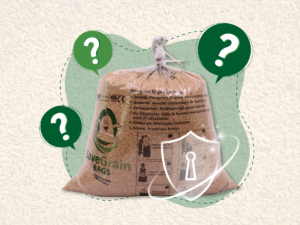Food needs to be made available to people all year round (ie, even beyond the harvesting period). Thus, it needs to be stored properly, preserving it in an optimal state. Drying grains is one of the most practical methods of primary food preservation.
In fact, improper drying before grain storage is an important cause of post harvest food loss occurring during the storage period.
India ranks first in the world with regard to the highest net cropped area, producing hundreds of millions of tonnes of food grains every year.
Production has been steadily increasing over the last two decades, thanks to advancements in production technology. However, food losses remain unchanged. This means that the loss of food grains is also increasing with the rise in food production. The main reason for this is improper grain storage.
There is a need for increasing awareness amongst crop owners about the availability of various grain drying methods, their use and advantage in drying food grain for better storage and marketing. Backed with high initial capital investment, proper drying and grain storage would help to greatly minimize food loss.
What does ‘drying’ mean?
Drying basically means the removal of moisture from the agricultural product.
This involves exposing the grain to air with low relative humidity, which will lead to the evaporation of moisture in the grain, and then removal of moisture away from the grain.
The process of drying allows preservation of grains, foods, fruits and vegetables. As a result, food grain storage is possible for a long period of time with high nutritious value.
The agricultural commodities that are dried include:
- rice
- wheat
- maize
- groundnuts
- soybeans
- coffee
- berries

Why is drying grains important?
All grains contain moisture. However, dry grains store better and safer than wet grains. This is because:
- If the grain is wet, the seed coat is not strong enough to keep out insects and molds. This can lead to grain spoilage.
- If the grain is wet, it will respirate much faster. This can lead to an increase in temperature. Insects and molds are more attracted to the warm grain.
- If the grain is warm and wet enough, its kernels could even germinate inside the storage place itself.
Hence, drying grains is crucial to store grains in a way that ensures:
- The moisture level is appropriate.
- Contamination by insects, pests and mold growth is avoided.
- Allows storage for long periods of time after harvest, before it can be sold or used.
- Prevents any loss of crop.
- Preserves its aroma, flavour, taste, and nutritious value.
- Ensures that the farmers get the best price for their crops.
Fundamentals of drying grains
Proper drying plays an essential role in ensuring food security. In fact, drying practices can have an impact on grain quality and seed viability. As a result, it is important to understand the fundamentals of drying grains.
- Moisture removal
In some grains, moisture is present at two levels: at the surface of the grain, ‘surface moisture’, and inside the kernel, ‘internal moisture’. While surface moisture readily evaporates on exposure to hot air, evaporation of internal moisture takes longer since it first has to move from the kernel to the outside surface.
- Drying rate
Drying rate is the rate at which moisture content declines during the drying process. So surface moisture and internal moisture will have different drying rates as per their respective drying periods.
- Temperature
Most agricultural products require heated air in the temperature range of 45-60°C for safe drying. The maximum safe air temperature will depend on the type of drying method, the crop, the moisture content, and its end-use.
- Uniform drying
There is always variability in the moisture content of individual grains during the drying process. The variability should as low as possible for optimal grain and seed quality. This is possible by frequent stirring in sun drying, grain turning in fixed bed dryers or circulation in recirculating batch dryers.
- Tempering
The moisture within the grain and between different grains will equalize if the drying stops temporarily. On restarting, the drying rate becomes higher compared to continuous drying. This process of stopping intermittently is called tempering. Therefore a period of tempering is important during drying.
What are the different methods of drying grains?
The quickest way to dry grains is by exposing it to air that is:
- Dry: so it can draw the moisture out of the grain
- Warm: so that the drying can take place faster
- Moving: so that it can carry the moisture away from the drying grain.
There are two types of Drying methods: natural and mechanical.
Natural drying or Sun drying
This is the most traditional method of drying grains. It uses solar energy directly, by absorbing it into the grain, and removing its surface moisture to the ambient air. It involves spreading of wet grain on the ground or on plastic sheets (to avoid contamination with dirt), and turning it from time to time to remove the extra moisture.

The drying time ranges from 5 to 45 days. This depends on the crop that one has to dry.
The advantages of sun-drying are:
- Air passes freely through the entire field.
- Unskilled labour can perform the job.
- No cost incurred.
- Possible to perform everywhere.
Sun-drying is the most common method for drying grains in India, This is because of the low level of mechanization in agriculture and high level of production. The disadvantages of this method are:
- Drying rate is slow.
- Depends on weather conditions.(Only possible during the day)
- Decreases the quality and quantity of the product.
- Uniformity in drying may not always be possible.
Mechanical drying
Mechanical drying method makes the use of thermal energy collecting devices and dryers which remove water from wet grains by blowing (heated) air through the grain. The process of drying continues until the grain contains the right level of moisture content.
Different types of solar dryers are available. This depends on their reheating modes as well as the method of usage of heat. There are also dryers which use propane or natural gas to heat air and then use large fans to push air through the grain.
The advantages of mechanical drying are:
- More rapid, safer and effective than traditional sun drying.
- Drying rate is high.
- Drying is possible to do during the day or night.
- Better control over temperature and moisture content.
- Produces better looking, better tasting, and more nutritious food.
- No losses incurred. Better productivity it is possible to reload within a few hours.
- Uniformity in drying and tempering can be achieved.
These dryers need to be made available to farmers, but that rarely occurs. The disadvantages of mechanical drying are:
- Expensive. Initial cost is very high for all the auxiliary equipment.
Tips for drying
With any drying method, follow these tips to achieve the best outcome.
- Properly prepare and clean the grains before drying. Remove leaves, rocks, plastic, or any other contaminants mixed with the grain.
- Determine the storage period to know the appropriate moisture content that the grain is to be dried at. Longer the storage period, lower should be the moisture content.
- Allow ample time for drying, especially if sun drying is opted for.
- Set the temperature as per safe drying limits, to prevent the grain from being too dried or too heated, which could spoil it.
- Know and monitor the moisture content of your grains even after drying.
- Try to use newer technologies and commercially available dryers for drying agricultural products before storage.
After drying the grain, it is of utmost importance to ensure proper grain storage, so that all that effort put into drying doesn’t go waste.
SaveGrain Bags offers hermetic bags. These bags are a grain storage solution and can protect grains from climate changes and as well as from pest infestations. These bags ensure that dry agricultural produce retains its quality without any deterioration in quantity.





